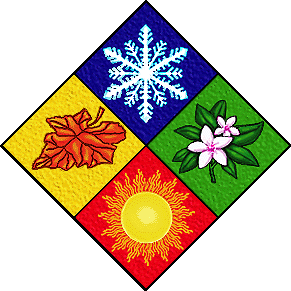What causes day and night?
The earth's rotation around its axis.
What is the sun?
a star
What phase of the moon is this?
New Moon
What planet is closest to the sun?
Mercury
What season is it in the Northern Hemisphere at location B?
Fall
Where does the sun rise from?
The East.
How many stars are in our solar system?
What moon phase is this?
Waning Crescent
What is the biggest planet?
Jupiter
Why does the Earth's seasons slowly change?
Where does the sun set?
What happens to the sun during a solar eclipse?
It gets blocked. (moon blocks sun's light)
What happens to the moon during a lunar eclipse?
It gets blocked. (Earth's shadow covers the moon)
What keeps the planets in orbit?
Gravity
What would happen to the seasons if the Earth's axis was straight and not tilted?
How long does it take the moon to orbit around the Earth?
around a month (27 days)
What phase of the moon is it during a solar eclipse?
New Moon
What moon phase is this?
Waxing gibbous
Which planet is furthest away from the sun?
Neptune
Why do the Northern and Southern Hemispheres experience opposite seasons?
One hemisphere is pointed towards the sun and the other hemisphere is pointed away.
What is the brightest star in the sky (other than the sun duh)?
The North Star
What is the sun made out of? (There are two answers)
Hydrogen and helium
What is the moon word for getting bigger and the moon word for getting smaller? (Be specific, which is which?)
Waxing - getting bigger
Waning - getting smaller
How many planets are in the solar system?
Eight
If its spring in the Northern Hemisphere, what season is it in the Southern Hemisphere?
Fall.




